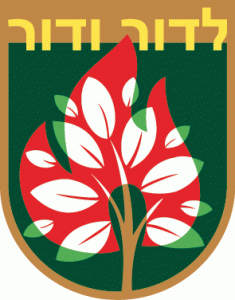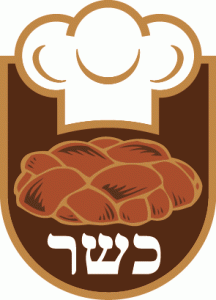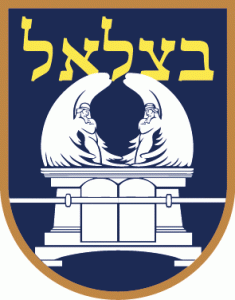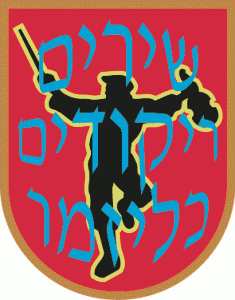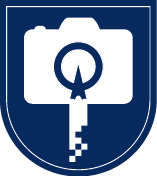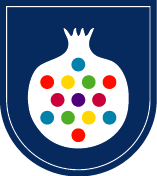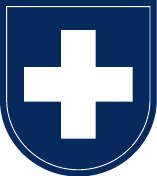“Success in training the boy depends largely on the Scoutmaster’s own personal example.” (Baden-Powell)
The madrichim are committed to training to accompany as mentors and counselors their scouts in the various learning and discoveries proposed in the Tsofim Yehudim programme. The badges worn by the madrichim are a pedagogical tool of the scout game promoting their commitment to the service of their scouts.
Madrichim wear three types of badges on their chultsa (shirt/jumper in Hebrew):
- Badges shared with their scouts, thus affirming their involvement in the discoveries and learning proposed in the Scout section.
- Specific badges visualizing their training path and their responsibilities within the Shevet Team. An example to follow for the youngest.
- Some important commemorative badges such as World Scout Jamboree jamboree, World Scout Moot, Roverway, Scouts of the World Award, …
Activity Badge Counselor
The Activity Badge Counselor is a key player in the Jewish Scout advancement program. Whatever your area of expertise or interest, you can play a vital role in stirring a boy’s and girl’s curiosity about particular topics.
As an activity badge counselor, your mission is to join fun with learning. You are both a teacher and mentor as the Scout works on an activity badge and learns by doing. Your hands-on involvement could inspire a Scout to develop a lifelong hobby, pursue a particular career, or become an independent, self-supporting adult.
“Our standard for Badge earning is not the attainment of a certain level of quality of knowledge or skill, but the AMOUNT OF EFFORT THE BOY HAS PUT INTO ACQUIRE SUCH KNOWLEDGE OR SKILL This brings the most hopeless case on to a footing of equal possibility with his more brilliant or better-off brother.” (Baden-Powell)
Badges shared with Scouts
1. Badge Advisors
This badge is sewn on the right sleeve, under the Shevet badge.
A madrich wearing an activity badge is « THE » specialist in that topic. He will help and assist each Scout who comes to him meets all the requirements for the activity badge he is coaching, both Proficiency badges for Scouts and Senior badges.
Madrichim choose their areas of specialization during their 2nd degree training course.
Coureur des Bois — Scout Trapper Councelor
You must have participated in a « Coureur des Bois » competition or be at the same level in Scouting techniques.
Madrichim and Rovers who wear this badge are trainers in Scouting techniques.
On the badge is written in Hebrew: LeDor VaDor, from generation to generation.
To obtain it, one must regularly participate in a Jewish study circle (Limmud) organized by your Shevet or your community.
« Je demande des gars […] à l’esprit et à l’horizon large, qui veulent étudier sans se noyer dans leurs recherches, des gens justes et méthodiques qui veulent progresser et mesurer le progrès réalisé, qui acceptent du Judaïsme l’enseignement de nos Prophètes et de nos Docteurs des directives pour la vie, des gens pas seulement persuadés que le Judaïsme propose une vie harmonieuse, mais décidés à réaliser cette harmonie de demain.» (Léo Cohn)
The Madrichim and Rovers who wear this badge regularly study the texts of the Jewish tradition. They thus prepare « Jewish Pages“ to better « enlighten » Jewish life lived with their scouts and rovers.
On the badge is written in Hebrew : Casher.
The rules of Kashrut have no secrets for you.
Madrichim and Rovers who wear this badge together meet the challenge of making the summer camp a high place of learning of Jewish gastronomy.
To obtain it, one must know and know how to prepare the main traditional dishes of Jewish cooking, both those of Achkenazi and Sephardic origin, especially those of Shabbat and festivals.
The peculiarity of this badge is to prepare with the parents of your Shevet who like to cook. They will teach you the secrets of their family recipes, an inheritance and a taste memory to be mastered to transmit them to the younger generations. It is these parents who validate this badge that could also be called « Krupnik & Dafina ».
[…] Mais, quand d'un passé ancien rien ne subsiste, après la mort des êtres, après la destruction des choses, seules, plus frêles mais plus vivaces, plus immatérielles, plus persistantes, plus fidèles, l'odeur et la saveur restent encore longtemps, comme des âmes, à se rappeler, à attendre, à espérer, sur la ruine de tout le reste, à porter sans fléchir, sur leur gouttelette presque impalpable, l'édifice immense du souvenir (Marcel Proust, À la recherche du temps perdu. Du côté de chez Swann, 1913)
Pour chaque siècle, il est quelques moments privilégiés qui résolvent les questions et déterminent l’avenir : tel apparaît le Bauhaus [...] Sur le plan international, le Bauhaus a fait prendre conscience des problèmes posés à l’art de notre époque et établi quelques-unes des réponses les plus fécondes. En ce sens, on peut même voir dans son action l’affirmation d’une morale. Souhaitant rapprocher théorie et pratique, et retrouver une unité entre l’art et les diverses activités humaines, le Bauhaus rejoignait l’ambition de tous les grands mouvements de pensée novateurs de l’Histoire. A ce titre, il se présente bien comme le Grand Atelier du 20e siècle.
On the insignia is written in Hebrew: Betsalel. The design of the badge incorporates the logo of the BETSALEL School of Art and Design in Jerusalem.
You are interested in graphic and artistic creation in all its forms.
« La couleur est la touche, l’œil, le marteau, l’âme, le piano, : l’artiste est la main qui par le bon choix des touches met l’âme du spectateur en vibration.» (Vassily Kandinsky)
« Je voudrai peindre comme l’oiseau chante.» (Claude Monet)
A key word to obtain this badge: to be curious. And that can be learned. Creative Workshops will soon be organized to develop the artistic theme within Tsofim Yehudim.
Shirim, Rikudim, Klezmer Councelor
On the badge insignia is written in Hebrew (from top to bottom): Shirim (songs) – Rikudim (dances) – Klezmer.
« Regarde du sommet de l’Amena »
(Chir haChirim, Cantiques des Cantiques 4:8)
Le mot regarde en hébreu "chouri" a la même origine que le mot chir "chant".
Et le mot Amana est de la même famille qu’Émouna "la foi".
C’est pourquoi le Beit Aharon comprend ainsi cette phrase : « le chant est le sommet de la foi.»
(Experiencing the Divine: A Practical Jewish Guide - Rabbi Kalonymus Kalman Shapira (the Piaseszner Rebbe) »
For those who like to sing, dance, play an instrument, and who wish to go further in body expression. and musical, theater and improvisation.
A key word to obtain this badge: to be curious. And that can be learned. Creative Workshops will soon be organized to develop the artistic theme within Tsofim Yehudim.
2. Position of Responsabilities
This badge is sewn 2 cm from the shoulder seam of the left sleeve.
Quatermaster
This badge is given at the end of the corresponding training.
The Madrich wearing this badge is in charge and trains the Quatermaster Team of the Shevet (Tribe) composed with the Quatermasters of the different clans (wearing the same badge). Together, they are responsible for the equipment and tents during outings, weekends and camps.
Grubmaster and Kashrut
This badge is given at the end of the corresponding training.
The Madrich wearing this badge is in charge and trains the Grubmaster & Kashrut Team of the Shevet (Tribe) composed with the Grubmasters of the different clans (wearing the same badge). Together, they are responsible for stewardship and kashrut on outings, weekends and camps.
Scribe
This badge is given at the end of the corresponding training.
The Madrich wearing this badge is in charge and trains the Communication Team of the Shevet (Tribe) composed with the Scribes of the different clans (wearing the same badge). Together, they are the Memory of the Shevet. During the activities, they make photos and videos. After the activities, they write articles (web and print) telling the activity to make known the life of the Tribe and their Clans to the parents, to the community, to the other tribes.
Jewish Life
This badge is given at the end of the corresponding training.
The Madrich wearing this badge is in charge and trains the Jewish Life Team of the Shevet (Tribe) composed with the scouts in charge of the “Jewish Life“ of the different clans (wearing the same badge). Together, they are committed to ensuring that Jewish Life in the Shevet and the clan is both joyous and serious, that there is no Scout activity without laughs, prayer, study, singing and dancing, and they are always ready to take scouts questions and address specific problems.
Hygiene and Health
This badge is given at the end of the corresponding training.
The Madrich wearing this badge is in charge and trains the Hygiene & Health Team of the Shevet (Tribe) composed with the scouts in charge of “Hygiene & Health“ of the different clans (wearing the same badge). Together, they are responsible for the Hygiene and Health of all during outings, weekends and camps.
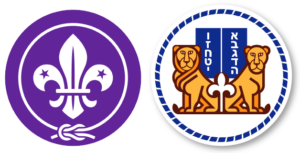
Tsofim Yehudim, L’Dor VaDor
Jewish Scouts, from generation to generation



